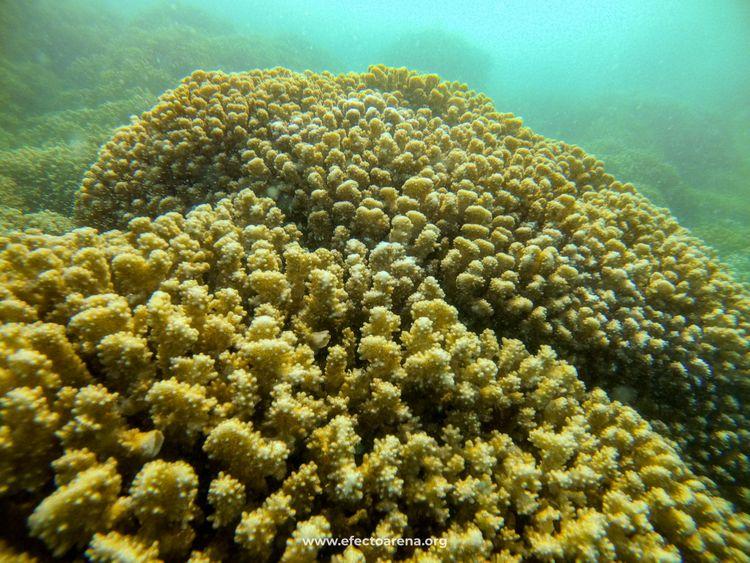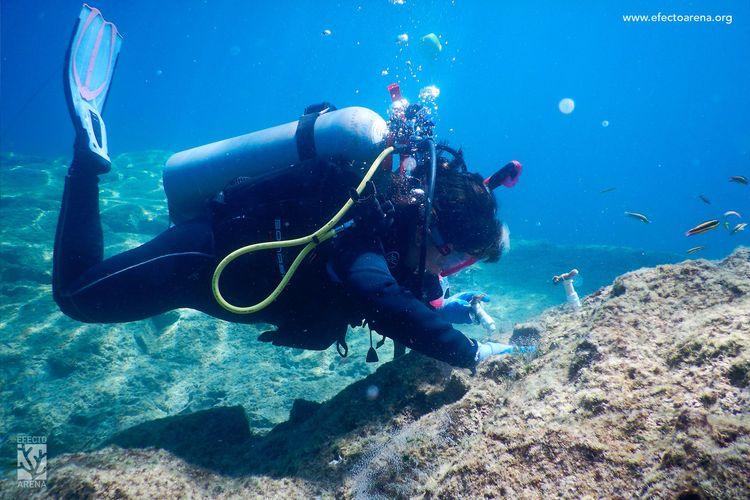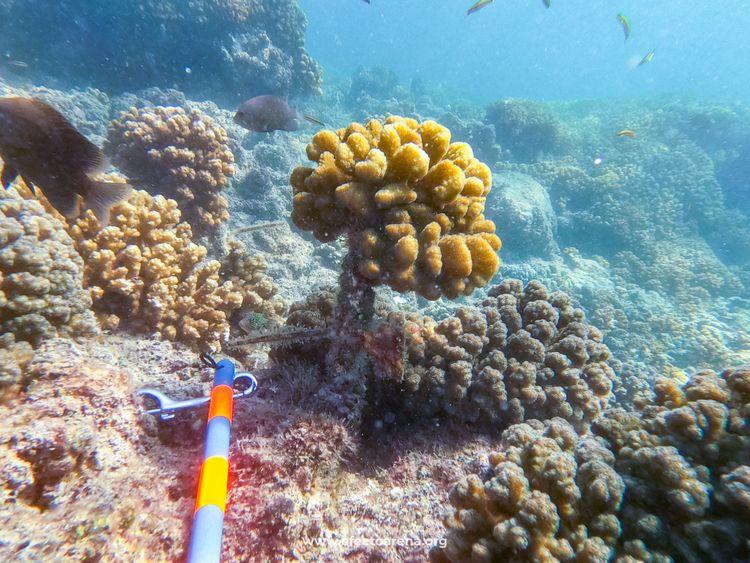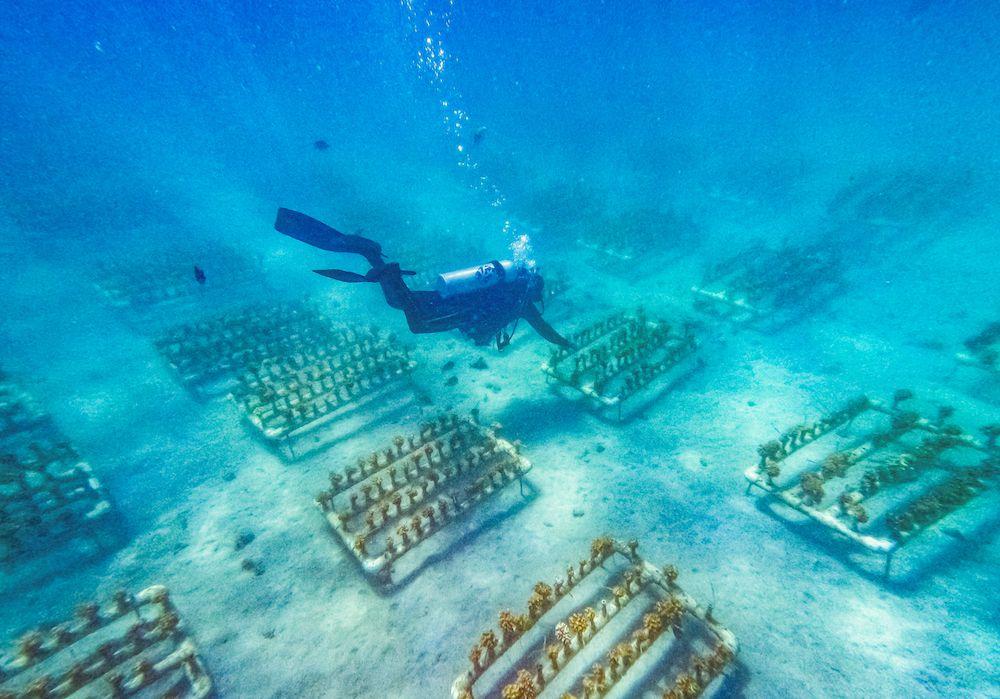Tourists who break corals with their fins while snorkeling, and boats that anchor on corals, have been the main threats to reefs off the coast of La Paz Bay in northwestern Mexico.
To reverse the damage, for four years the organization Efecto Arena has been dedicated to the restoration of corals in areas with greater anthropogenic damage, such as the Lighthouse Islet of San Rafaelito, located in the Balandra Flora and Fauna Protection Area (APFF), said Carlos Cáceres, responsible for the coral education and restoration program.
“We reviewed the Bay of Peace in detail and found that the sites most visited by tourists for flora and fauna observation actions or simply visits to popular beaches, caused damage to surrounding reefs,” he said.
San Rafaelito Island has had a higher turnout for six years since tourist service providers and visitors in general identified it as a good place for sighting and swimming with sea lions and for snorkeling on its reefs because the area is closer to the city of La Paz than Espíritu Santo Island, making it cheaper and more accessible to them.
From then on, tourist service providers in the area, such as José Luis Martínez, began to notice the death and change of color of the corals, which worried him because the tourist attraction of the place is due precisely to them and to the diversity of species that live there. “That's what attracts the most, creating a good show for any tourist swimmer.”

Coral reef in Ilote Faro de San Rafaelito, in the APFF Balandra. Source: Arena Effect
Reefs cover only 0.2% of the ocean floor but are home to a quarter of all marine species and for this reason the UN Environment Program (UNEP) considers them a crucial and fragile habitat. From 2009 to 2020, approximately 14% of the world's coral has been lost, he reported.
In addition to the economic losses for tourism, Cáceres pointed out that corals are a coastal protection, a breeding area for some species and carbon dioxide sequestrators, so if they disappear, they would stop providing these ecosystem services.
Coral Gardening

Diver placing a coral colony on the PVC bases. Source: Arena Effect
The organization, with the appropriate permits and with the support of donors such as Baja Ferries and Alumbra Innovations, developed a method for the propagation of a genus of coral whose fragments are collected and incubated for six months until they are the appropriate size to be considered a young coral colony.
This is then transported to the site where the environmental restoration will take place, where it is placed on an epoxy resin base to which the corals are placed, which begin an entire adaptation process before starting to grow.
So far, Efecto Arena has planted 5,000 young coral colonies on San Rafaelito Island with very good results: at a depth of six meters there is a survival of 60% and in the depth of eight to twelve meters it is 90%.

Coral successfully planted and adapted to the San Rafaelito Island reef. Source: Arena Effect
Cáceres pointed out that the area where they have had poor results has been in the shallow areas of the Islet, where there is a 0% survival of corals.
“Not because corals are not viable, but because we continue to have the action of boats that come with very powerful motors and the vibration is so strong that it fractures the corals, and the swimmers, who, unfortunately, are very short, get in, hit with their fins and break,” he explained.
Regularly, coral restoration processes end when they are planted, however the organization is working to ensure the success of the planting by monitoring and reseeding the corals that die, so that of the initial 5,000 plantations, 800 have been re-seeded.

Measurement of corals planted on the Lighthouse Island of San Rafaelito. Source: Arena Effect
In addition, the coral growth observed in La Paz Bay is higher than in other areas of the country such as Nayarit, since they have monitored that the corals planted have grown by two centimeters per year in all directions.
Although they have developed coral planting projects in San Juan Nepomuceno, Punta Pichilingue and Loreto Bay, Cáceres recognized that there are many other sites that urgently need restoration, such as Corralitos, La Lobera, Islotes de El Gallo, and La Gallina, located in La Paz Bay.
Sow prevention
In addition to these initiatives, Martínez shared that it is important that more anchoring areas be established and that all maritime transportation be limited and sensitized not only within the APFF Balandra, but throughout the Bay of La Paz, since currently only service providers authorized by Conanp adhere to the guideline of not anchoring on the reefs, but the rest of the navigation does not.
“You have to assign it precisely so that you are at least controlling them and avoiding anchoring and also navigation as much as possible. Navigation is very close to that reef... we, the service providers, have that, a lot of talk, and we do follow it to the letter. The question here is who is not informed and who has no conscience,” he said.
Providers have also implemented good practices such as establishing a swimming route for swimmers who take to snorkel and thus prevent them from interacting directly with and damaging the coral.
Cáceres hopes that, together with the APFF, a rosary of floats will be installed that surrounds the reef area so that, even if they want to, swimmers cannot approach the reefs and have greater protection, at the same time they work on other environmental education projects, which is a fundamental point for successful coral planting.
“If we are educated, then we will all understand the importance of restoration. Even that restoration won't be necessary because it's going to be preserved.”
If these initiatives are implemented, it will pay for what the organizations Sustainable Tourism and Social Development Network and WWF Mexico, in collaboration with the Secretariat of Economy and Tourism of Baja California Sur, the Tourism Trust of Baja California Sur and Airbnb, call regenerative tourism that “prioritizes environmental sustainability, social inclusion, gender equality and local culture.”



Comentarios (0)